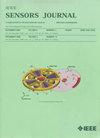Neighborhood Structure Consistency for Point Cloud Registration With Severe Outliers
IF 4.3
2区 综合性期刊
Q1 ENGINEERING, ELECTRICAL & ELECTRONIC
引用次数: 0
Abstract
Point cloud registration (PCR) is a fundamental task in 3-D sensor technology and computer vision, aiming to estimate the rigid pose between two point clouds and align them. Correspondence-based methods generate and verify hypothetical poses by sampling consistent correspondences. However, the presence of severe outliers in feature correspondences poses substantial challenges during the sampling process. It may result in misjudgment of inlier consistency relationships, leading to incorrect sampling and causing PCR failure. In this article, we introduce the neighborhood structure consistency (NSC) metric to guide consensus excavation. It incorporates tighter global consistency constraints rather than local consistency, yielding a more distinct inlier cluster and significantly mitigating the impact of outliers. After that, we propose an NSC-based graph-guided sampling consensus (NSC-GSAC) algorithm, which performs the sampling process on a consistency graph based on the NSC metric. This graph provides a dense representation of connections among inlier correspondences, narrowing the search space and facilitating cleaner consensus subsets sampling, thus improving the registration robustness and efficiency. Additionally, to further improve efficiency, we introduce a pruning redundancy hypothesis selection (PRHS) strategy to prioritize highly promising representative hypothetical poses, thus accelerating the registration process. Extensive experiments on real-world indoor and outdoor datasets demonstrate that our method achieves superior registration accuracy and efficiency compared to state-of-the-art methods, including both traditional and learning-based methods. Furthermore, experimental results also indicate that our method exhibits more robust performance in the presence of severe outliers, outperforming all other methods.严重离群点云配准的邻域结构一致性
点云配准(PCR)是三维传感器技术和计算机视觉中的一项基本任务,旨在估计两个点云之间的刚体姿态并对齐它们。基于对应的方法通过采样一致的对应来生成和验证假设姿态。然而,在特征对应中存在严重的异常值在采样过程中提出了实质性的挑战。这可能导致对内部一致性关系的误判,导致采样错误,导致PCR失败。在本文中,我们引入邻域结构一致性(NSC)度量来指导共识挖掘。它结合了更严格的全局一致性约束,而不是局部一致性约束,产生了更明显的早期集群,并显著减轻了异常值的影响。在此基础上,提出了一种基于NSC的图引导抽样一致性(NSC- gsac)算法,该算法基于NSC度量在一致性图上执行抽样过程。该图提供了早期对应之间连接的密集表示,缩小了搜索空间,促进了更清晰的共识子集采样,从而提高了配准的鲁棒性和效率。此外,为了进一步提高配准效率,我们引入了一种修剪冗余假设选择(PRHS)策略,优先考虑具有代表性的假设姿态,从而加快配准过程。在真实世界的室内和室外数据集上进行的大量实验表明,与最先进的方法(包括传统方法和基于学习的方法)相比,我们的方法具有更高的配准精度和效率。此外,实验结果还表明,我们的方法在存在严重异常值的情况下表现出更强的鲁棒性,优于所有其他方法。
本文章由计算机程序翻译,如有差异,请以英文原文为准。
求助全文
约1分钟内获得全文
求助全文
来源期刊

IEEE Sensors Journal
工程技术-工程:电子与电气
CiteScore
7.70
自引率
14.00%
发文量
2058
审稿时长
5.2 months
期刊介绍:
The fields of interest of the IEEE Sensors Journal are the theory, design , fabrication, manufacturing and applications of devices for sensing and transducing physical, chemical and biological phenomena, with emphasis on the electronics and physics aspect of sensors and integrated sensors-actuators. IEEE Sensors Journal deals with the following:
-Sensor Phenomenology, Modelling, and Evaluation
-Sensor Materials, Processing, and Fabrication
-Chemical and Gas Sensors
-Microfluidics and Biosensors
-Optical Sensors
-Physical Sensors: Temperature, Mechanical, Magnetic, and others
-Acoustic and Ultrasonic Sensors
-Sensor Packaging
-Sensor Networks
-Sensor Applications
-Sensor Systems: Signals, Processing, and Interfaces
-Actuators and Sensor Power Systems
-Sensor Signal Processing for high precision and stability (amplification, filtering, linearization, modulation/demodulation) and under harsh conditions (EMC, radiation, humidity, temperature); energy consumption/harvesting
-Sensor Data Processing (soft computing with sensor data, e.g., pattern recognition, machine learning, evolutionary computation; sensor data fusion, processing of wave e.g., electromagnetic and acoustic; and non-wave, e.g., chemical, gravity, particle, thermal, radiative and non-radiative sensor data, detection, estimation and classification based on sensor data)
-Sensors in Industrial Practice
 求助内容:
求助内容: 应助结果提醒方式:
应助结果提醒方式:


